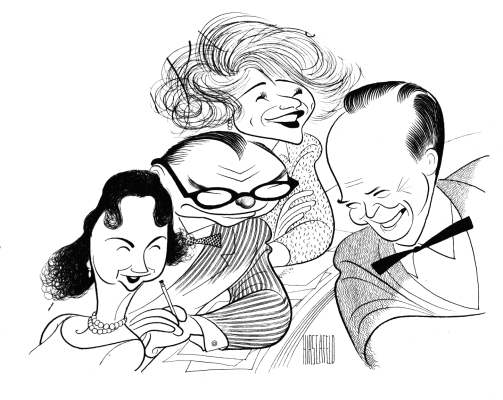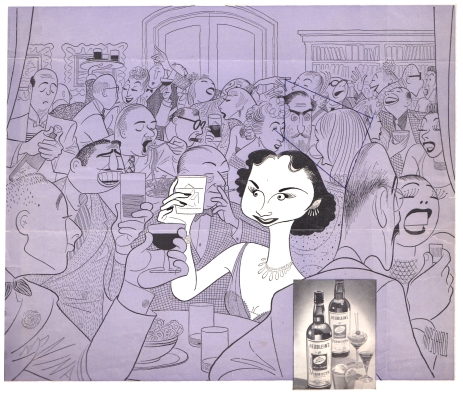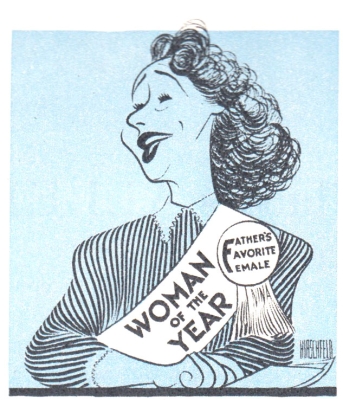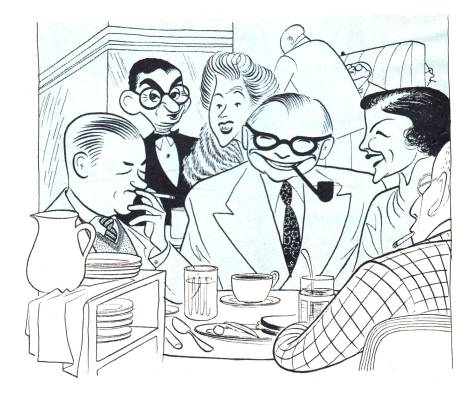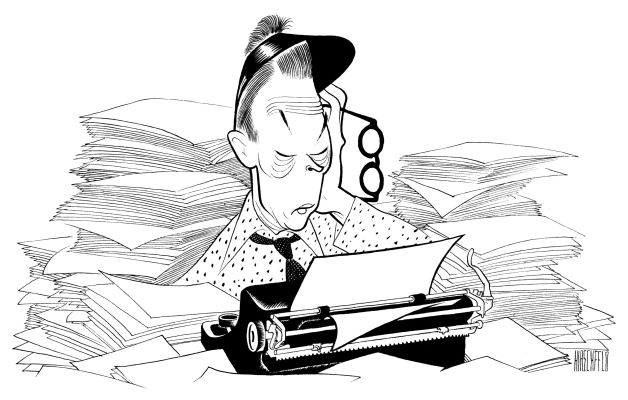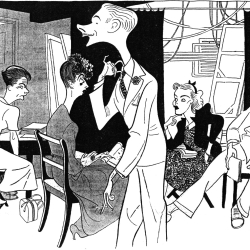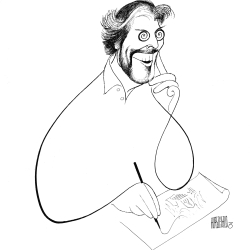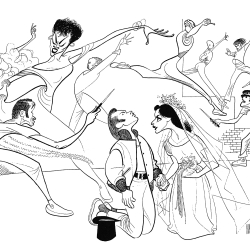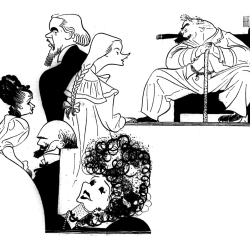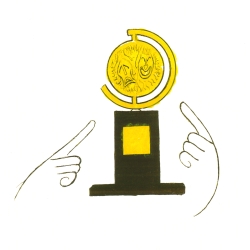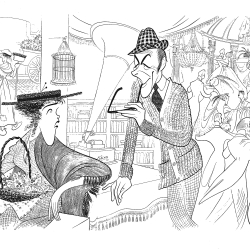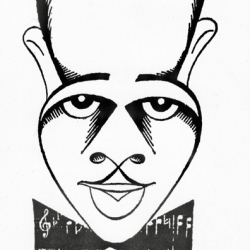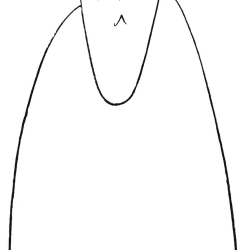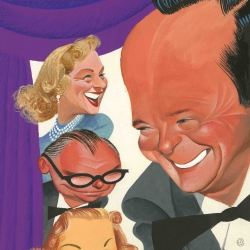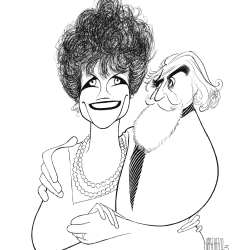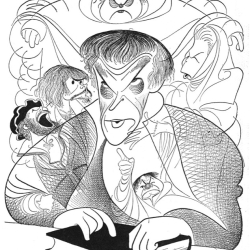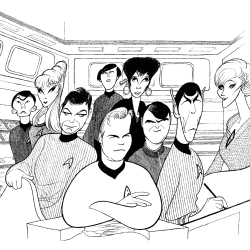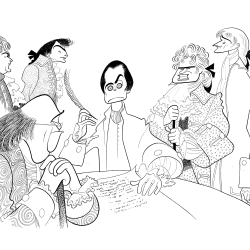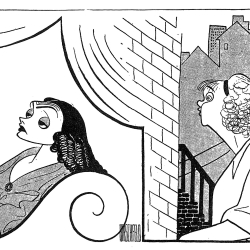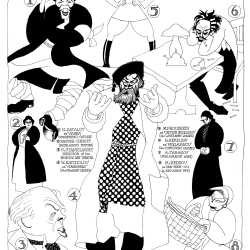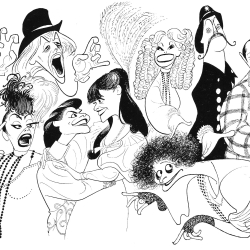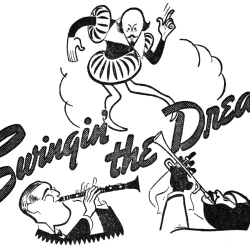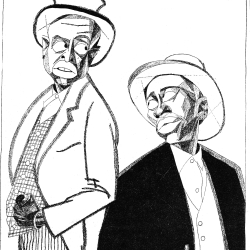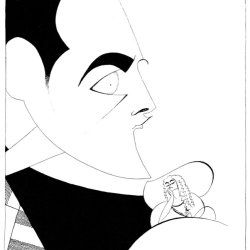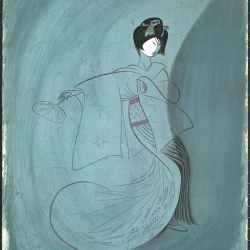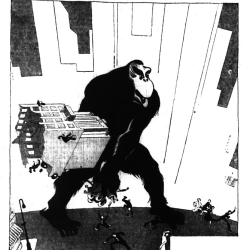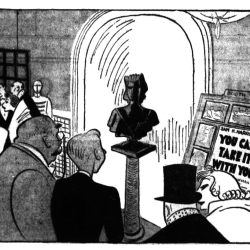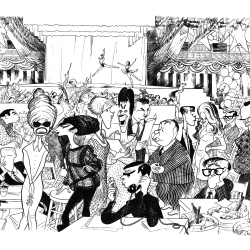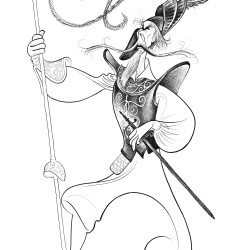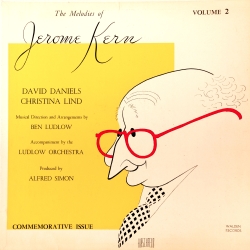What's My Line?
Have you ever wanted to take a master class in 20th century popular culture? What if I told you that you could take this course for free at anytime by watching videos on YouTube? Are you interested? Here’s how!
As a millennial working with Hirschfeld’s art, I have always felt that I have a slight disadvantage as I don’t have the first hand knowledge of the performers and the productions that so many have of Hirschfeld’s drawings, even though I have love for theatre and old movies . With a degree in art history, my first response to Hirschfeld’s drawings is the drawings themselves rather than the personalities.
As I saw more of Hirschfeld’s work over the last three and half years, I became fascinated with his covers for TV Guide. Two in particular stood out: Edward R Murrow (1955) and What’s My Line (1956). The crazy thing was, I didn’t know the subject of either cover! I was able to fall in love with the images without having any idea who the subjects were. Soon I learned of Murrow’s history with CBS News and that he was the “Good night, and good luck” guy, but remained in the dark about What’s My Line.
It was only after watching my first Marx Brothers film, Duck Soup (I know it only took 82 years) and wanted to learn more that I came across the episode of What’s My Line with Groucho on the panel in August, 1959. Turns out, this is one of the most famous—and undisputedly the funniest—episode of the show. I was hooked, and I started watching every episode from the very beginning.
For those unfamiliar with the television show, What’s My Line is a game show where a panel of New York sophisticates has to guess the “line” or occupation of a “civilian” contestant as well as a celebrity “mystery guest”. Watching the mystery guests was like watching a Hirschfeld drawing come to life. Take for example, Jack Lemmon. My only exposure to Lemmon was through the Hirschfeld drawings I saw at work. The first time I saw Lemmon on the panel, I screamed, “Wow, he looks just like Jack Lemmon!” My Hirschfeld experience is completely backwards from audiences of the time. I see the drawings first, and then see the flesh and blood personalities, so the people really do look like the drawings, rather than the other way around.
Mystery guests range from Disney to Dali and Reagan to Roosevelt. A very young Betty White sits on the panel numerous times, and Lucille Ball reigns as the most frequent mystery guest with six appearances. Dick Clark, Louis Armstrong, Buster Keaton, and Rodgers and Hammerstein all appear as well. Mystery guests were usually in town to promote their latest film, record, show, etc. so I am able to learn what was going on in the entertainment world around at the time of the episode.
The show was hosted by John Daly of ABC News, even though What’s My Line is a CBS show. Daly was a war correspondent overseas during WWII with Edward R Murrow (who appeared as a mystery guest in 1952). Daly missed only 4 episodes from the show’s extensive run from 1950-1967. The panelists included Dorothy Kilgallen, a fixture on the panel from the first episode. Her column “The Voice of Broadway” appeared in “papers coast to coast” filled with the happenings of Broadway and beyond. Arlene Francis, an established stage actress with a quick wit. Her husband Martin Gabel would also become a frequent guest on the panel, and brought a sort of friendly family feud to the show. Co-founder of Random House, Bennett Cerf brought intellectualism to the panel. Cerf’s cringe-worthy puns are a fixture on the show, with Daly regularly apologizing to the audience for Mr. Cerf’s “punny” behavior. From panelist Steve Allen I learned the colloquial form of measurement “bigger than a breadbox.” On the topic of Allens, humorist Fred Allen joined the panel in 1954, bringing a very dry sense of humor to the show. Fred Allen was a close friend of Hirschfeld’s, and the pair would go for a Chinese dinner every Tuesday night for years. Hirschfeld also illustrated Allen’s books Treadmill to Oblivion and Much Ado About Me. Allen’s run on the show came to a tragic end in March 1956 with his sudden death on W 57th street.
I have watched over a decade of What’s My Line and it is remarkable how much one can learn about the popular culture of mid 20th Century America from the show, whether it be theater, film, television, music, dance and so much more. It has added another layer of appreciation to my interest in Hirschfeld’s art. And it makes my job that much better!
Katherine Eastman
Archives Manager

